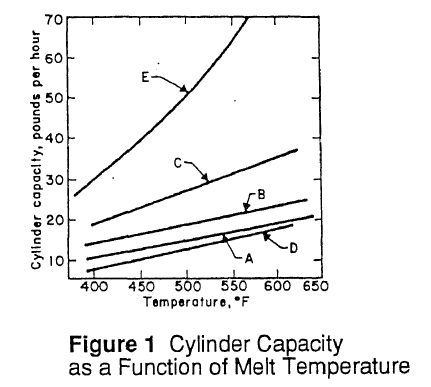External Heating of Injection Cylinder
– By Zafar Kamal
All injection-moulding machines make use of electrical heaters to aid in the plastification of the material being processed. The most common system uses mica heater bands of high wattage. Actually, several of these heaters are used per zone on the injection cylinder and, depending upon the size of the machine, the total wattage available for heating can be quite substantial.
Each zone along the length of the barrel is individually control by the thermocouple and a pyrometer. The thermocouple senses the temperature developed within the zone and transmit the information to the controlling pyrometer. When the temperature reaches the set point of the pyrometer, a signal is generated which tells the heater control to cut off the supply of electricity to that set of the heater bands. Likewise, when a given zone is indicated as being below the preset temperature level, a signal calling for a heat is sent back and the power is again applied to the heating bands.

There are a number of suitable instruments commonly used sense temperature along the barrel. The proportioning pyrometer is frequently found as standard equipment on most molding machines. Other types, which are usually more expensive, can be incorporated as optional equipment, when more accurate control is necessary.
| Shot size Ounces |
Plasticizing capacity, lbs per hour |
Approximate heat input, kilowatts |
Screw power input horse power |
|---|---|---|---|
| 1 | 17.5 | 2.0 ~ 2.5 | 3.5 |
| 3 | 45 | 2.8 ~ 4.1 | 5 |
| 6 | 80 | 4.4 ~ 5.2 | 10 |
| 9 | 125 | 8.5 ~ 9.0 | 15 |
| 12 | 220 | 9.0 ~ 10.5 | 25 |
| 24 | 250 | 10.6 ~ 12.0 | 40 |
| 40 | 400 | 15 ~ 20 | 50 |
| 60 | 440 | 20 ~ 25 | 60 |
| 80 | 700 | 25 ~ 30 | 75 |
| 100 | 750 | 30 ~ 40 | 90 |
| 150 | 850 | 40 ~ 50 | 100 |
| 200 | 1000 | 60 ~ 70 | 125 |
| 225 | 1500 | 68 ~ 75 | 150 |
| 350 | 1800 | 75 ~ 100 | 200 |
To generate the proper signals for the pyrometer and control the heating zones, thermocouples are inserted into the barrel. A thermocouple works on the principle of generating a small electrical current within a bimetallic element as the temperature changes. The current is sensed by instrumentation within the pyrometer so that a signal is generated which can be calibrated to be read on a scale as a specific temperature. It is important to realize that the calibration for any instrument is affected by changes in the instrument itself, or in the choice of thermocouple, or in the length of the connecting wires with a resulting effect on the accuracy of the readings. Also, any damage to the thermocouple itself may result in erroneous readings.








